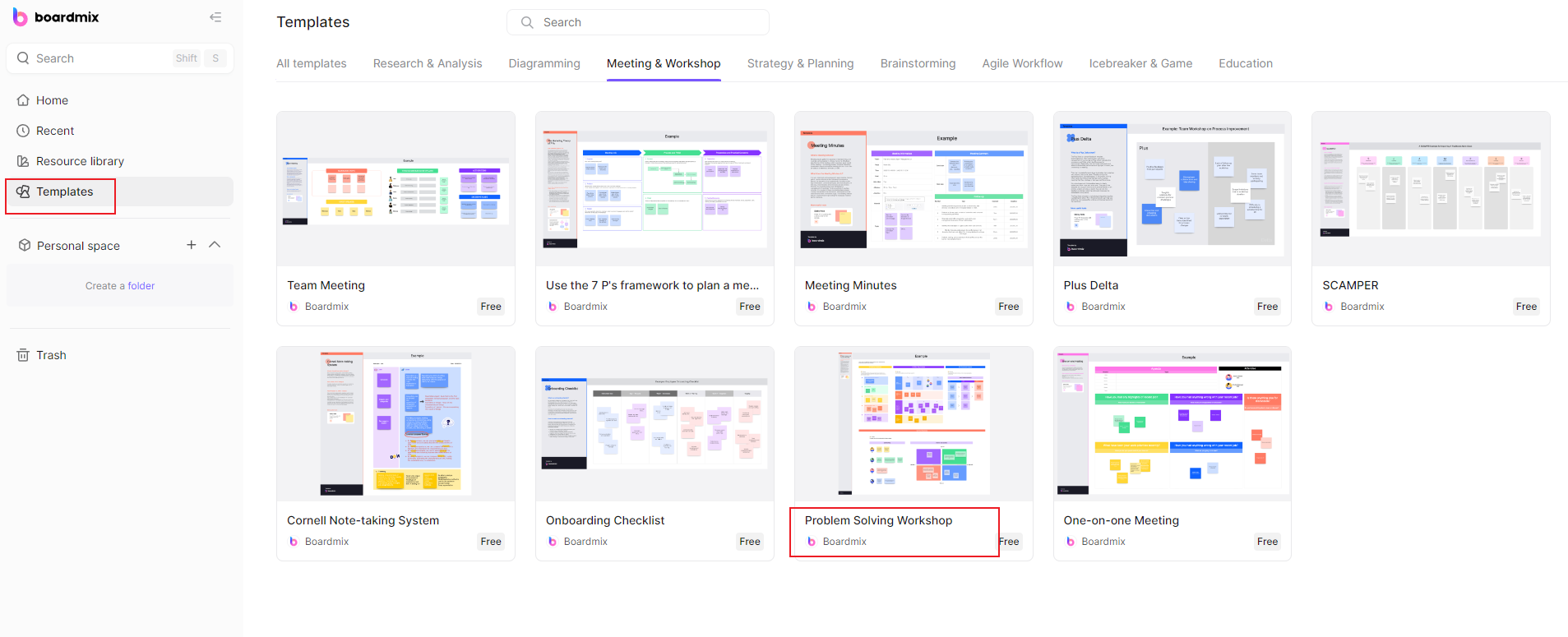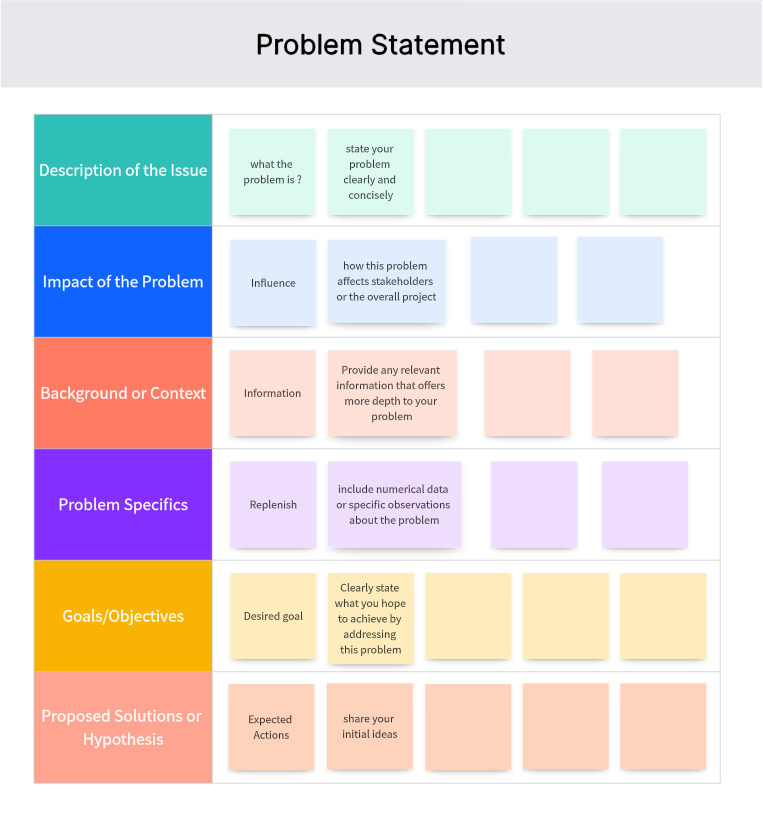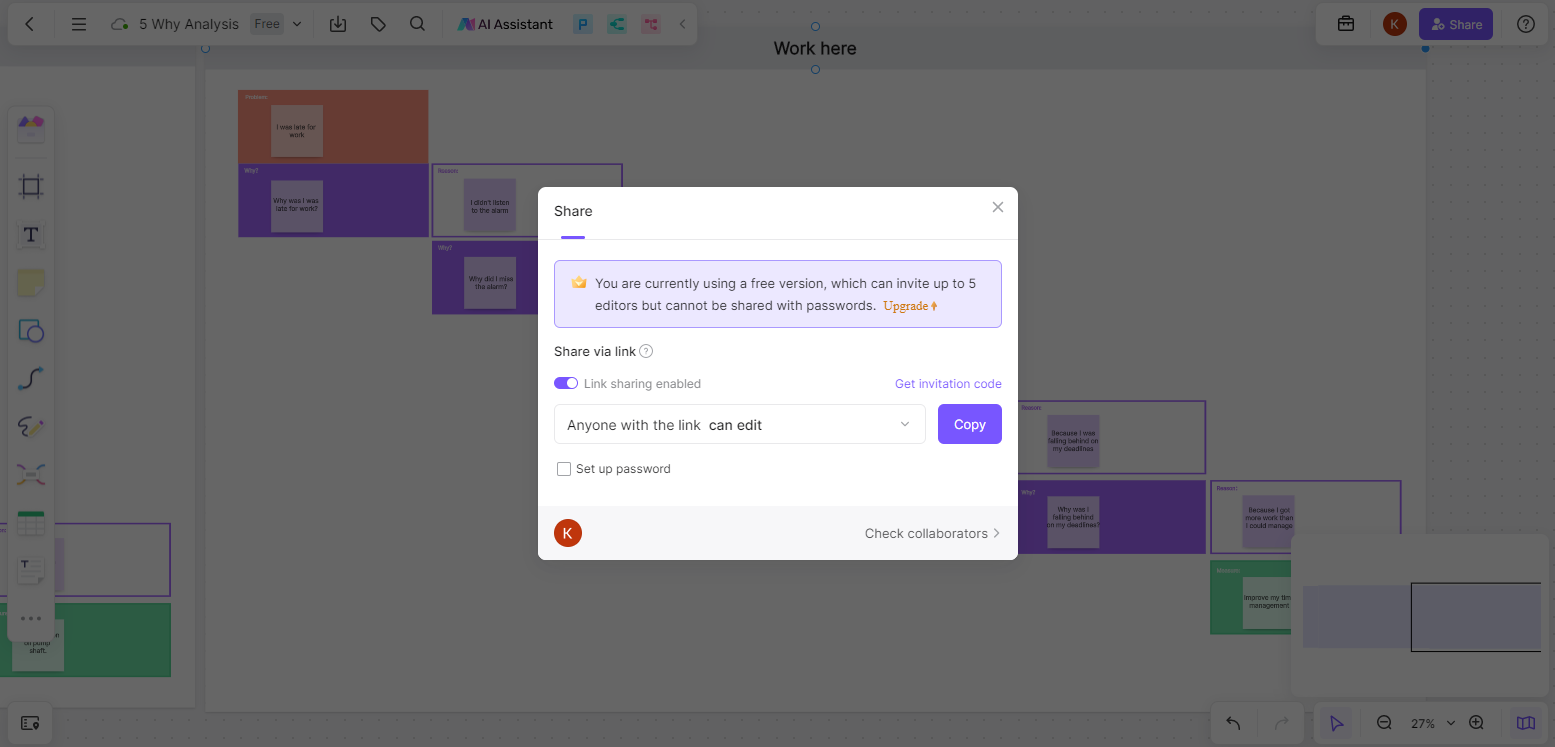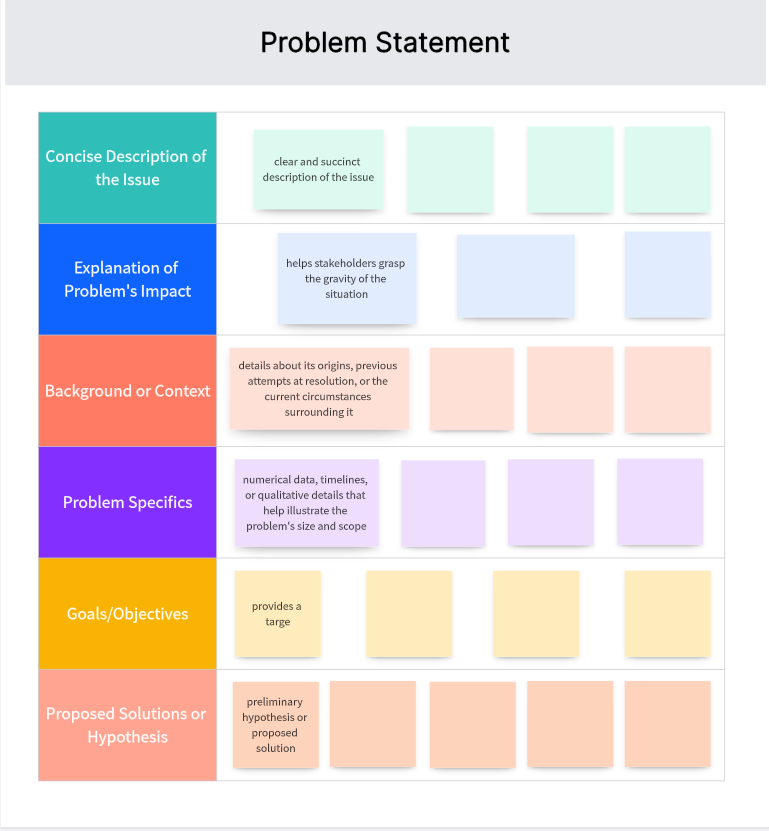

A clear problem statement is the cornerstone of any successful project or initiative. It succinctly articulates the issue at hand, guiding stakeholders towards effective solutions. This article will explore the significance of crafting a robust problem statement and learn how free templates from Boardmix can streamline this crucial process.
In any project or research, defining a clear " problem statement " is a critical step. It helps understand the problem at hand, the scope of its impact, and the necessity of finding a solution. Here's why the problem statement is important:

1. Provides Direction
The problem statement acts as a compass that guides the course of your research or project. It defines what you need to accomplish, helping focus your efforts on specific goals and avoid getting sidetracked.
2. Sets the Scope
A well-crafted problem statement delineates the boundaries of your project or research. It helps determine what is included within the project scope and what falls outside of it.
3. Assists in Problem Solving
The first step in solving any problem is understanding it thoroughly, which is exactly what a problem statement does. By clearly defining the problem, it becomes easier to brainstorm effective solutions.
4. Facilitates Communication
The problem statement provides a clear explanation of the issue to all stakeholders involved, ensuring everyone has a shared understanding of what needs to be addressed.
5. Helps Measure Success
The problem statement sets a baseline against which you can measure the success of your solution. It allows you to evaluate whether or not the solution has effectively resolved the problem.
6. Aids in Decision Making
A clear problem statement can help you prioritize tasks and resources. By knowing exactly what problem you're trying to solve, you can make better decisions about where to invest your time and effort.
All in all, the importance of a problem statement lies in its ability to provide clarity, focus, and direction for your project or research. A well-defined problem statement is instrumental in developing effective solutions and ensuring successful project execution.
Boardmix is an efficient tool for managing projects, and it includes free templates to streamline various processes, including crafting a problem statement. Free problem statement templates can simplify the process and make it easier to craft your problem statement. Here's how you can leverage Boardmix's templates to create an effective problem statement:
1. Select the Right Template
Log into your Boardmix account and navigate to the templates section. Look for a problem statement template. Depending on your needs, you might prefer a template that is simple and concise or one that allows for more detailed information.

2. Understand the Template Structure
Typically, a Boardmix problem statement template will have the following sections:
Description of the Issue
Impact of the Problem
Background or Context
Problem Specifics
Goals/Objectives
Proposed Solutions or Hypothesis
Ensure you understand what each section requires, and how it contributes to the comprehensive picture of your problem statement.

3. Fill in the Template
Once you've selected your template, start filling it out:
Description of the Issue: Here, state your problem clearly and concisely.
Impact of the Problem: Explain how this problem affects stakeholders or the overall project.
Background or Context: Provide any relevant information that offers more depth to your problem.
Problem Specifics: Here, you can include numerical data or specific observations about the problem.
Goals/Objectives: Clearly state what you hope to achieve by addressing this problem.
Proposed Solutions or Hypothesis: If applicable, share your initial ideas for solving the problem or any hypotheses that you plan to test.

4. Review Your Problem Statement
After filling out the template, take some time to review your problem statement. Make sure it's concise and communicates the issue at hand. If any part of the statement seems vague or unnecessary, refine it for clarity and relevance.
5. Share for Feedback
Boardmix allows for collaborative work. Share your draft problem statement with your team members or stakeholders for feedback. Their insights can help refine your problem statement and ensure it is accurate and comprehensive.

The key to crafting an effective problem statement is to strike a balance between specificity and brevity. Below are ten practical examples of problem statements that clearly define a particular issue, its impact, and the need for a solution.
1. Traffic Congestion
"During peak hours, the traffic congestion in City X increases travel time by 60%, causing commuter frustration and affecting overall productivity."
2. Customer Retention
"Our software company has witnessed a 25% decline in customer retention over the last quarter, indicating potential issues with product satisfaction or customer service."
3. Pollution
"Over the past five years, City Y's air pollution levels have doubled, exacerbating public health risks and hindering sustainable development."
4. Cybersecurity
"With the increasing incidences of cyber threats in our organization, there is a need to enhance our cybersecurity measures to safeguard sensitive data."
5. High Employee Turnover
"High employee turnover within our sales department is resulting in lower team morale and increased training costs."

6. Lack of Clean Water
"Community Z lacks reliable access to clean water, compromising residents' health and well-being."
7. Slow Website Speed
"Our e-commerce website's slow loading speed is causing a high bounce rate, which may lead to potential loss of sales."
8. Poor Communication
"Cross-departmental communication in our organization is inefficient, leading to project delays and decreased productivity."
9. Decreased Market Share
"Our company's market share in the organic food industry has decreased by 15% over the past year due to increasing competition."
10. Low Literacy Rates
"The literacy rate in Region Q is significantly lower than the national average, restricting economic growth and individual progress."
Each of these problem statements successfully pinpoints a specific problem, presents measurable details of its impact, and underscores the importance of finding a solution. By following these examples, you can craft a problem statement that will guide your project or research toward effective problem-solving.
A well-crafted **problem statement** acts as a guide for your research or project, helping maintain focus and drive toward effective solutions. Here are the key elements that make up a robust problem statement:
1. Concise Description of the Issue
A problem statement should begin with a clear and succinct description of the issue. This helps establish an immediate understanding of the problem at hand.
2. Explanation of the Problem's Impact
Highlighting the problem's impact helps stakeholders grasp the gravity of the situation. This element explains why it is crucial to address the issue and outlines the consequences of ignoring it.
3. Context and Background
It's important to provide relevant context or background information that sheds light on the problem. This might include details about its origins, previous attempts at resolution, or the current circumstances surrounding it.
4. Problem Specifics
Delineate specific aspects of the problem in a tangible, measurable way. This could include numerical data, timelines, or qualitative details that help illustrate the problem's size and scope.
5. Goal Statement
Outline what you hope to achieve by solving the problem. This forms a critical part of the problem statement as it provides a target to aim for, helping measure progress and success.
6. Hypothesis or Proposed Solution
Although not always required, some problem statements may include a preliminary hypothesis or proposed solution. This provides an initial direction for the investigation or project.

Remember, an effective problem statement is clear, concise, and focused. It sets the stage for the entire project or research by defining its purpose, guiding its trajectory, and establishing measures for success. Ensuring these key elements are present will help create a well-defined, effective problem statement.
In conclusion, the strength of a problem statement lies in its clarity, specificity, and focus on the issue at hand. Harnessing the power of well-crafted problem statements with free templates from Boardmix, you can empower your projects with clarity and direction, utilizing practical examples and key elements to drive meaningful solutions and achieve your objectives. With Boardmix's free problem statement templates , crafting a compelling problem statement becomes an organized and efficient process. Start and give it a try!